Online retail isn’t here to stay, it is here to dominate.
The buying of goods and services online was already a fairly popular practice as of 2019. But the covid 19 pandemic and the heavy restriction of movement caused by the Great Lockdown abruptly accelerated the popularity of this practice on an enormous scale.
Nearly 150 million people made online purchases for the first time in the pandemic. As it turns out, most people are deciding that they like this new lifestyle.
48.8% of consumers said they would shop online more frequently after the crisis. The older generations in particular, the baby boomers and Generation X, are keeping true to this statement as their reliance on online shopping looks to be permanent.
What do these facts mean for online retail? Well, we can expect a sustained increase in market demand and growth potential for online retail services in the coming years.
Across all age groups, the number of new eCommerce consumers is expected to continue to grow.
Also, from a financial standpoint, the online retail sector is projected to hit positive annual growth rates globally by 2024.
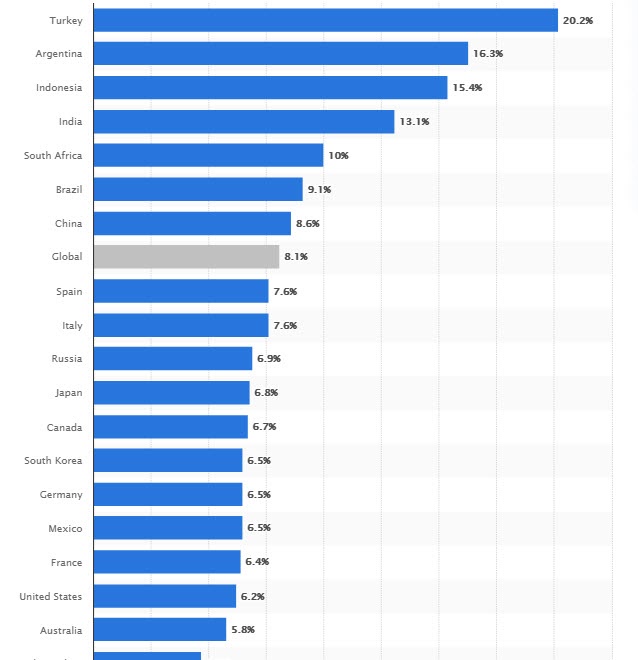
Retail brands have recognized this shift and as a result, more brick and mortar stores continue to create online stores for their business.
In the light of these new developments, it has become pretty clear that the future of retail is online and the smart business owners should have taken this into account. With the surge of online retail, managing multiple stores has become vital. Effective software solutions now streamline operations across various locations, ensuring efficient inventory management and cohesive customer experiences.
Competition for customers in the online space has become tougher than ever and as a result, online retailers have become more innovative in their customer acquisition and retention.
The eCommerce boom triggered by Covid won’t be a temporary one. Consumers will continue to flock online for their products, and they will continue to demand faster and more convenient ways to get those products.
Smooth and very realistic shopping experiences on all platforms, whether on mobile or PC, speedy delivery, and a more human connection with brands are now top things on the consumer priority list.
The competition for market share becomes increasingly stiff and even unfair at times as online retail giants and marketplaces like Amazon continue to capitalize on their competitive advantage of bigger market share and resources to learn and use the “tricks” before everyone else.
Despite this situation, there’s still fertile ground for competition. More and more brands are deciding to create their own stores on eCommerce platforms like Shopify and Wix instead of restricting themselves to third-party selling on Amazon.
As if on cue, eCommerce is becoming a much more convenient practice for budding online entrepreneurs. eCommerce tools and services that streamline and integrate eCommerce processes are at the disposal of any potential online retailer, now more than ever, as competition becomes crowded in that area too.
Retailers branching online can decide to sell using either Shopify or Amazon. Following this, there are dozens of Shopify alternatives to provide users with a wealth of choices.
With so many details and data to take into account, you, as a retailer must focus on one, most important fact; to survive in a fast-paced and competitive digital era, you must constantly be in touch with market trends and rather unpredictable consumer behavior so that you can maximize your customers’ satisfaction.
Here are some of the facts that paint a good picture of the future of online retail and tips on how you can leverage these data to position your eCommerce brand for success.
Omnichannel is the Future
Omnichannel is winning. Consumers are making sure.
More customers than ever are choosing to do their shopping across multiple channels. Businesses that streamlined their services across more than 3 digital channels performed 300% more than businesses that didn’t.
This new era buyers, especially millennials and Gen Zs, are more prone to observing a product on one platform and completing the purchase journey through other platforms. They might see a product on your store and decide to check your social media for reviews, for instance.
Being able to make purchases on multiple platforms apart from an online store is gaining traction too. For starters, explainer video and chat commerce is becoming a thing, and social media giant Facebook is integrating purchasing capabilities into Whatsapp and Instagram Reels. You can use some IG Reels editing tools to make your store outstanding.
Smart retailers will respond to this new potential by considering adding digital platforms that are not major social media channels to their marketing arsenal.
Making such a move becomes more plausible when you consider that niche social media platforms like TikTok, Pinterest, cheap pc games or video games or even gaming software like Fortnite are now eCommerce options, either as marketing or purchase outlets.
The rising importance of mobile
Omnichannel is getting both retailers and consumers alike to talk about mobile. People only want to buy from sites that load faster than they blink. And most people would rather buy on mobile sites.
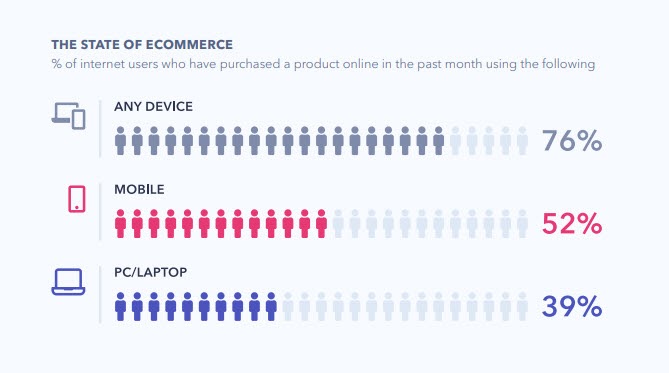
If you’re trying not to lose customers, then work on the mobile interface of your online store. A very good percentage of consumers shop through their phones. Mobile commerce made up at least 45% of total eCommerce sales in 2020. The sales have only moved upwards since 2016.

The surge is rising and practically so. Three out of four consumers will prefer to shop on their phones because it saves time. At the same time, a huge number of consumers think their mobile experiences could be better, at least 90%.
The major complaints in this regard are small, hard to click pages and online privacy. As a retailer, these areas are a few vital priorities you need to be on top of in your mobile eCommerce strategy.
Another consumer pain point for mobile eCommerce that you must optimize is the loading speed of your mobile online store.
The physical aspect of Omnichannel
Omnichannel still involves streamlining the digital experience with the physical. Consumers want and should be afforded the access of ordering products or receiving discounts online and redeeming them at physical stores.
Setting up local pickup stores that are nearby consumers or using the services of third party logistics companies (3PLs ) will improve the process of order fulfillment for consumers.
Employing these convenient alternatives to expand delivery options will increase customer satisfaction for online retailers.
As a retailer looking to capitalize on the omnichannel strategy for eCommerce, you should:
- Make your business available on as many channels as you can. Consumers should be able to appreciate your products on diverse platforms and make a purchase in any such platform, at that moment, if possible.
- Use an eCommerce platform that integrates and uniformly accounts for, if not all, most levels of data. Your workflows, along with your sales, product, and customer information should be managed in one centralized retail management system.
Consider going for a headless eCommerce system that gives you full control over the front-end of your platform. This sort of system makes integration with very useful and otherwise uncooperative third-party apps much more possible.
- Progressive web apps that have accelerated mobile pages are innovative options you have to consider for mobile. A web page that loads instantly and a web design so suited for mobile it even works when offline are must-haves for online retailers.
- Focus on creating a seamless, enjoyable customer experience on all your channels and customer touch-points. From your site or store design and features (online or brick and mortar) to your products, and your customer service, consumers must have good memories.
Consumers want a realistic virtual experience
One of the main hindrances of eCommerce is that consumers can’t feel or see the product and have a shopping experience like they would in real life.
Consumers are trying to bridge that gap, and so are online retailers in response. Product pages, where all the product information is displayed, now need to be more detailed than ever.
People want to be able to see the product’s realistic details as much and up close as possible from their devices. This means using HD images that can zoom into a cloth’s fabric and still retain picture quality.
It also means using more pictures and videos on product pages to provide multiple angles and perspectives on a product. Whereas 3-4 images was the average maximum put on product pages, consumers now seem to want at least 6.
Customer service also comes in in this case. The ability to “hey” a mall agent or store owner or cashier in a physical store and ask for more information can then be replaced by live chats or chatbots that are always available at any point in a customer’s online journey.
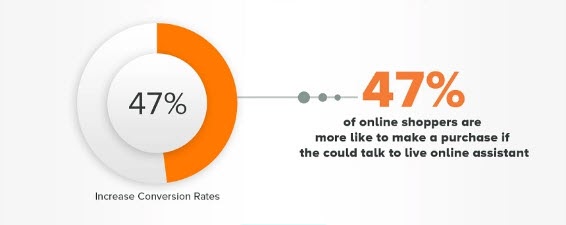
Big brands, sensitive to consumer urges as ever, are responding to this need for reality in the digital experience by starting to use live stream shopping. This platform provides a really connected experience, as viewers can chat with store owners or influencers, and click on highlighted items in the live-stream to make their purchase.
The need to connect to reality is ever present, and you, as a retailer can take advantage of this by:
-
- Offering a more personal, transparent view of your business by making behind-the-scenes videos to give customers a comprehensive and educating virtual product tour of your physical workplace. You can also exhibit the creative process or history behind your product.
- Going beyond pictures and videos and using augmented reality and 3D modeling. A 3D model of a product helps the consumer to determine the shape, texture, and scale of a product from any angle.
AR allows people to test the virtual version of a product in an interactive environment. Therefore, it can stimulate the real-life shopping experience.
- Being there whenever customers want to reach out. This means having a constantly available customer service, and through all platforms, be it calls, emails, SMS, social media. This also means having real-time communication features like live chats or chatbots or 24/7 virtual phone service.
- Making your online store’s design and features as seamless, homely, and natural as possible.
The bar keeps rising for convenient, flexible shipping and payments
It’s no longer enough that you can get goods to consumers on time. They now want multiple options on how these goods can be delivered to them.
The retail giants keep raising the standards in this regard by using their numerous pickup stores and retail branches to create convenient delivery options.
Local store pickups, curbside pickups, same day and two-day deliveries are amongst these options. As a result, they have become shipping luxuries that consumers expect from any online retailer.
Free shipping has also become a necessity as 64% of consumers prefer not to pay for delivery. A lot of them say free shipping really determines if they buy from a brand or not.
To meet this demand without losing profits, some brands use incentives to make up for shipping costs. Customers have to spend up to a certain amount or complete certain actions to qualify for free shipping.
Some retailers have simply merged shipping fees with product prices to cover the costs.
Having multiple payment options
The scope has expanded for payments too. Like with shipping, consumers want the wealth of choice and convenience. And progressive brands, in natural fashion, have responded by adding mobile payment and “buy now, pay later” options to their platforms.
These options make payment seamless and easier for consumers. They also make products more affordable for shoppers on low budgets. More importantly, they are satisfactory options for young people, millennials and Gen Z, who make up a huge share of eCommerce consumers.
Some online payment providers are becoming necessary thanks to their popularity. Customers may find it odd if they’re not available options on online stores
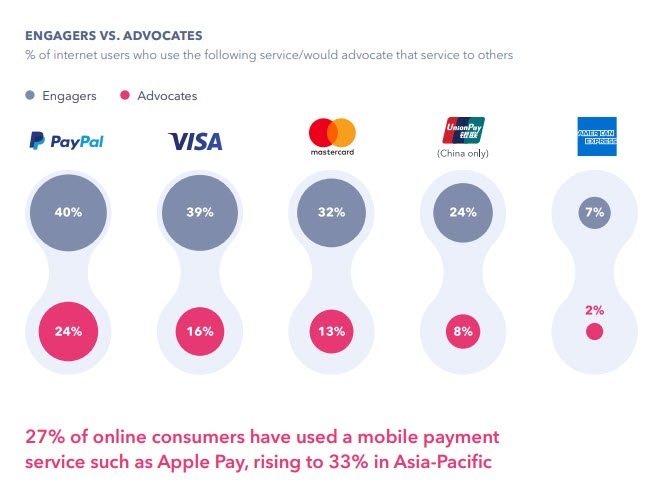
Returns and branded packaging
Returns are a big deal now too. More people are returning products than ever, some even using their returns as a product testing strategy. They would order 4 versions of the same product to see which one works for them and return the remaining 3.
Most consumers just need the assurance of return policies to feel confident about making a purchase. They want to know that returning a product in case it doesn’t meet their standards wouldn’t be a hassle.
In response, online retailers are developing more consumer-favorable return policies and stating them clearly on their sites. Usually, consumers expect at least a 30-day limit for returns.
Another major development when it comes to delivery is that consumers want designed and branded packages. Most customers will remember and prioritize a company that delivers specially packaged goods.
Allowing buyers to digitally self-customize goods is an option online retailers can consider, as it is becoming a popular trend in eCommerce delivery. People are loving the idea of being able to design their own packages, mostly because it offers more of a personal and sentimental experience.
Shipping and order fulfillment have certainly become more expensive, both in terms of effort and capital, for online retailers. Your brand can find strategic ways to meet this harsh demand by:
- Working with third-party logistics, preferably ones that have delivery warehouses in the areas you ship to. This makes your goods closer to customers, so delivery becomes less of a hassle.
This would make it possible for you to implement curbside and local pickups as delivery options. Or you can negotiate with the logistics company to work around late periods so that same day deliveries are a possible convenience.
- Integrating an inventory management software that updates and synchronizes your inventory and order information on your diverse channels and networks. This makes product management and order fulfillment across multiple platforms and locations easier and time-saving for retailers.
- Adding mobile payment services like Paypal to your payment options. Use platforms that allow you to offer a buy now, pay later option.
Installmental payments are becoming a normal practice and shoppers are now on the lookout for it. They want to be able to spread out their payments if they need to. This feature can be leveraged as a way to increase sales of more expensive products.
- Making your returns process easier. Besides a favorable returns policy, you can automate the process to speed up the submission of information for consumers.
You can also make returns less of a losing strategy for you by suggesting consumers exchange products or offering them store credits they can use to make other purchases instead of returning their money outright.
- Branding your packages and making them smaller where possible. Simple, classy, unique, and compact are the wish words for customers. Also, consumers are now very environmentally conscious, so focus on using sustainable or recyclable packaging.
The rise of voice automation
The tendency of digitalization keeps popularizing, leading to a new force emerged in the form of voice search.
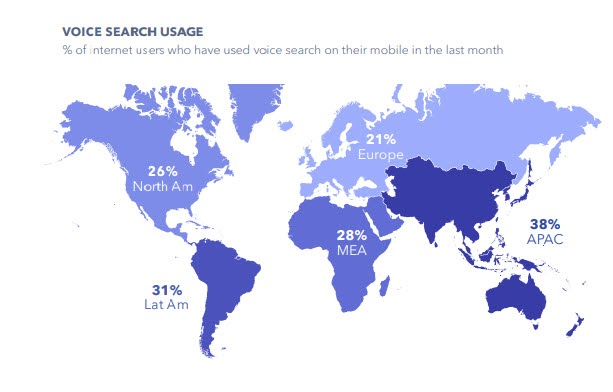
A lot of consumers, especially millennials fancy the act of curating their shopping lists through the voice assistants on their phones. It then becomes a smart move for brands to integrate voice search marketing into their eCommerce marketing strategy.
Retailers that do this successfully see their products or brand get suggested on the search results of shoppers that use voice search.
Some store owners even collaborate with search engine giants like Google. By doing this way, they can offer click-to-purchase features when their businesses or products come up. This speeds up the purchase journey for consumers.
Voice automation is exciting and it’s definitely going to become a thing. If you want your online store to stay on track with this trend, then you must:
- Do the obvious and prioritize voice search marketing. Create engaging content that is voice-search optimized so it comes up as part of the answers and suggestions to voice search queries.
- Make sure your eCommerce business is top-notch by focusing on consumer satisfaction and product quality. This is because product reviews are becoming increasingly vital.
Google would only voice suggest high-performing and relevant businesses that it thinks are the best choices for consumers. Customer reviews are a major way to get your online store on Google’s high-priority list.
So use tactful channels like push notifications for mobile apps, emails (e.g. mass email services), and pop-ups for your site or app to promote surveys asking customers to review your brand.
- Optimize your business listing for voice search if you have a physical store. Consumers will use voice search to look for products that are nearby. You want your business to appear in the search results if you’re in a consumers’ vicinity.
The opportunities outweigh the challenges
The future of online retail has never looked so inviting and challenging at the same time
On the one hand, e-merchants can easily access cutting-edge eCommerce tools. This results in numerous chances for store owners to make a profit from the rapid increase of consumer demand.
However, store owners need to keep up with the latest technology trends and apply them to their businesses. The reasons lie in the high standards for pleasant consumer experience and worryingly dominant competition.
But the positives win. Consumers, albeit in slowly increasing numbers, are beginning to appreciate the unique, ‘‘cozy’’ brands and special, branded products. Small businesses now have more chances to boost their product visibility. Thus, they are likely to gain more market share more than they had a few years ago.
Whatever the scenario, one certainty remains in online retail: Businesses that prioritize their consumer satisfaction by keeping track of consumer behavior have a higher chance of success in a competitive environment than businesses that don’t.